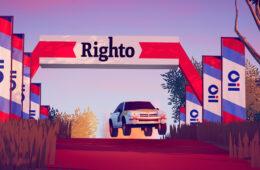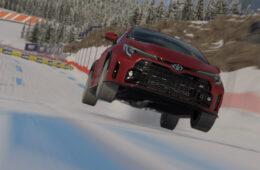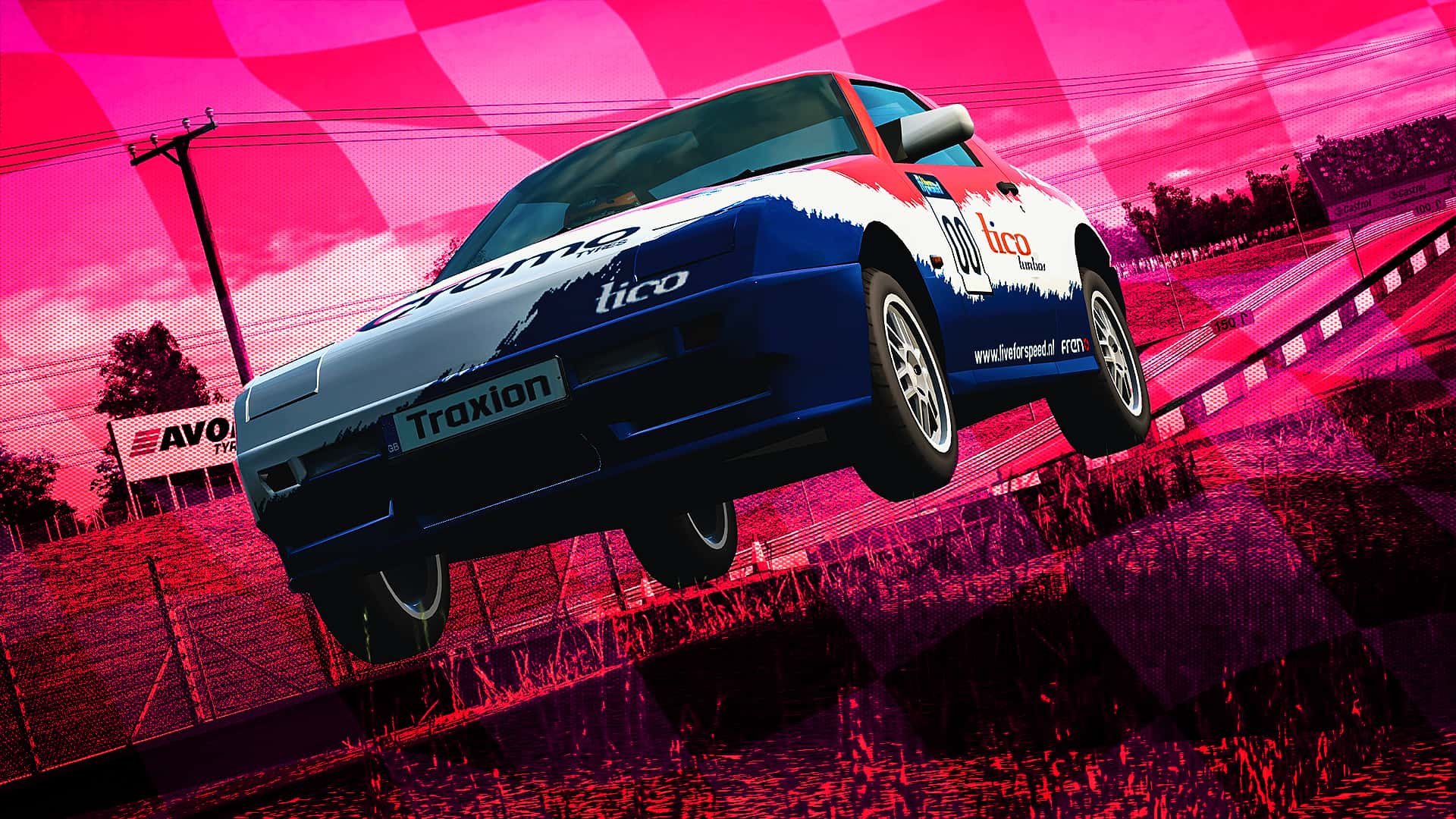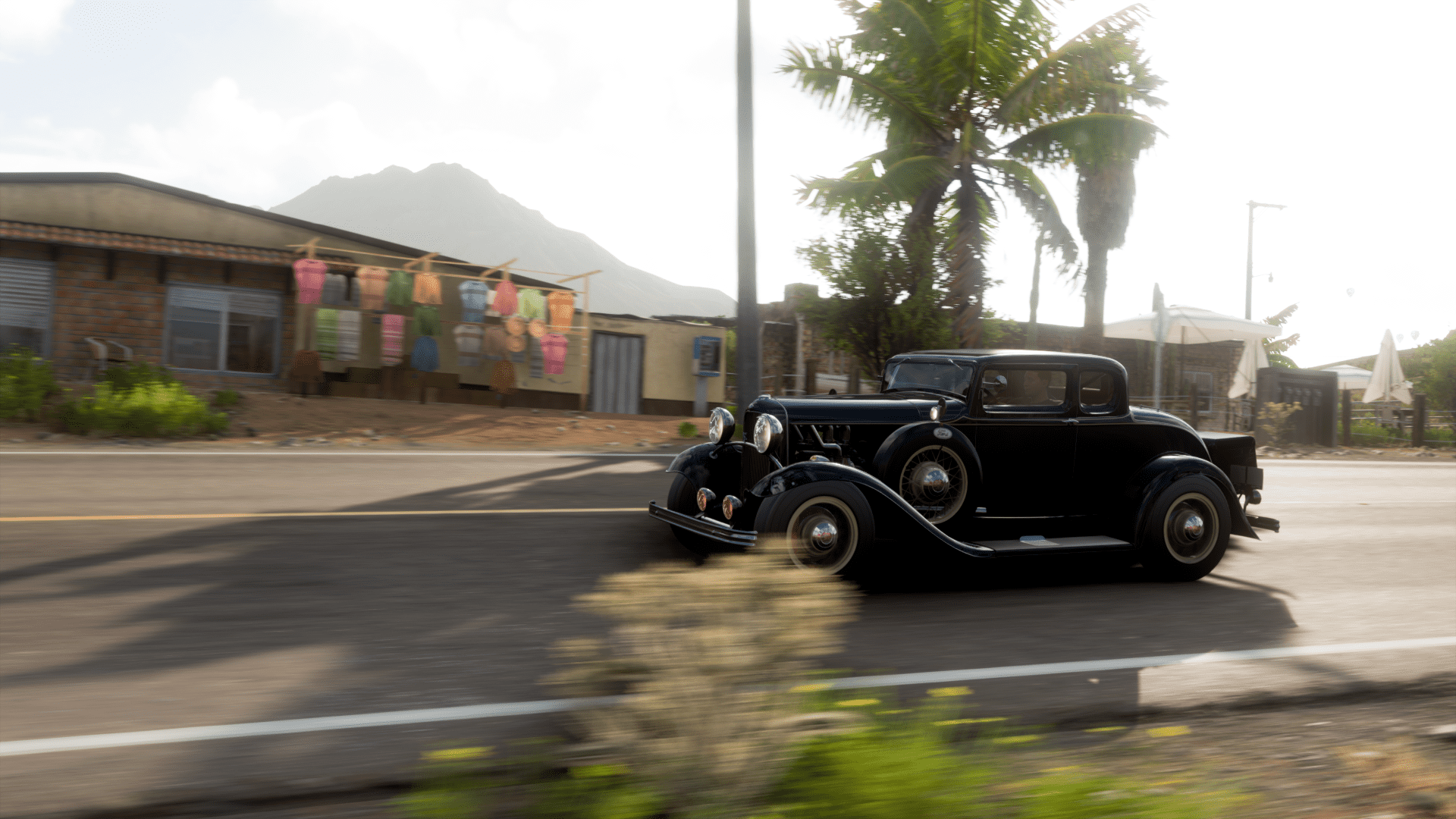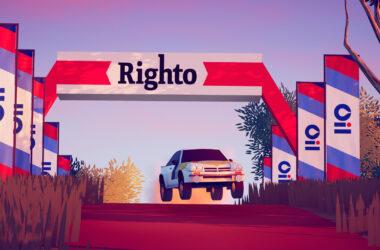Many of you reading this article will be familiar with the regard felt for older sims such as Grand Prix Legends, Indy 500, Richard Burns Rally and Geoff Crammond’s Grand Prix series. These titles are all – quite rightly – seen as pivotal moments in sim racing history, thanks to their advanced physics engines and ability to immerse players in their respective motorsport worlds.
But there’s another sim we can add to this exalted list: Live for Speed.
For the uninitiated, Live for Speed is a racing sim devised, produced and published by three people – Scawen Roberts, Eric Bailey and Victor van Vlaardingen.
Its first public beta release came in August 2002, and it has enjoyed numerous updates since, including major Stage 1, Stage 2 and Stage 3 upgrades.
20 years on, we aim to answer the question: why do so many sim racing aficionados rank Live for Speed (LFS) alongside such luminaries?
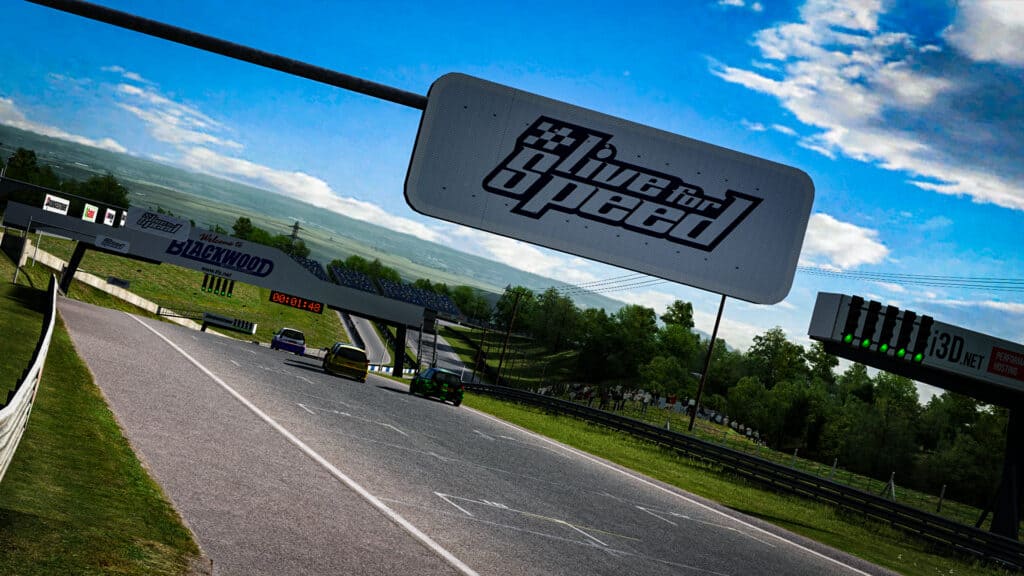
Speed for life
LFS has endured while countless sims and driving franchises, including rFactor, Race ‘07, GTR 2, Automobilista and Assetto Corsa (AC) have progressed to sequels or disappeared completely (GTR 3, anyone?)
The project began while Roberts and Bailey worked together at Lionhead Studios in 2001. The idea of an online racing simulator was mooted between the pair of racing game enthusiasts, eventually blossoming into a beta of Live for Speed.
Lionhead Studios was co-founded by the eccentric Peter Molyneux. Molyneux was also responsible for heading up legendary ‘90s developer Bullfrog, makers of the incredible Theme Park, Theme Hospital and Syndicate.
After completing work on ambitious god simulator Black & White, Roberts and Bailey were able to focus on Live for Speed development, eventually leaving Lionhead. With hindsight, and given Molyneux’s subsequent fall from grace, the decision to forge their own path – with sound designer van Vlaardingen – was the correct one.
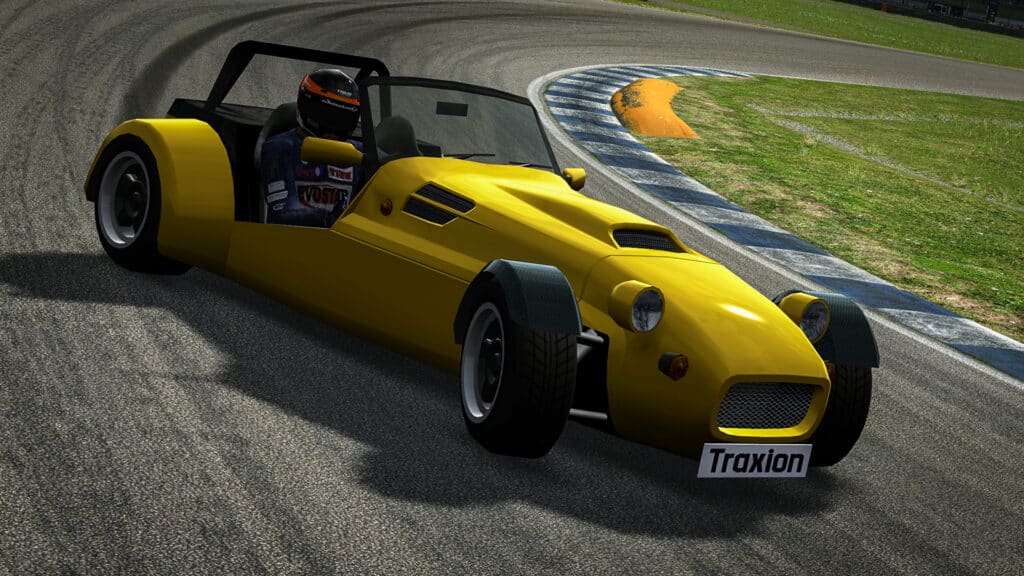
Click and connect
One of the core aims of LFS was to get players racing online within two clicks of starting the game. In 2002, when home internet was slowly transitioning from dial-up to faster, more stable broadband connections, this was a bold strategy.
However, it can also be argued that it showed great foresight on the developers’ part, as LFS was immediately at the apex of the online PC racing scene. As a result, sim racing communities rallied around the excitingly realistic handling model.
One of the platform’s strong points is its diversity. From an early stage, the sim featured road cars, race cars, rally cars, drift cars, open-wheelers and autocross. Thanks to the in-game map editor, players could even create their own autocross courses, covering a little-known motorsport discipline in the process.
LFS’ tyre model was ground-breaking at the time of initial release too, with subsequent iterations adding dynamic flat spots, hot spots, dirt and wear features. Tyre wall deformation was a notable highlight.
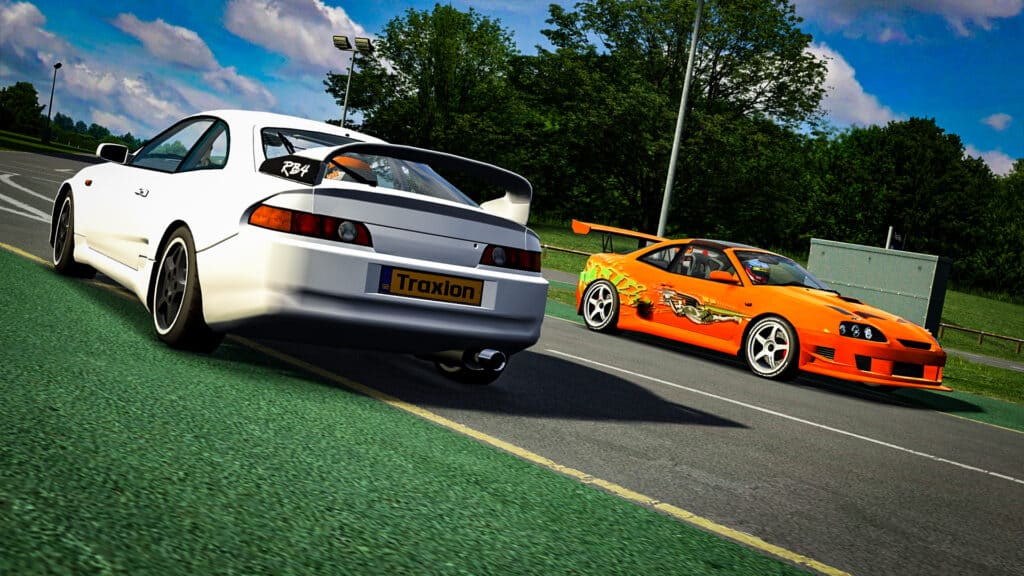
Modern sims like rFactor 2 (rf2) and iRacing have since caught up and arguably have more complicated and satisfying tyre models now, but LFS felt satisfyingly realistic from day one. How a tyre model feels to drive is entirely subjective, but from a technical horsepower standpoint, it’s difficult to argue that LFS trumps the likes of rF2 nowadays.
BeamNG.drive is seen as a pioneer in sim vehicle damage-modelling, but before it even existed you could overheat your clutch, drop a cylinder or even pop a damper in LFS.
In an online race, if you’ve never overtaken an off-sounding XF GTI with a slipping clutch can you even call yourself a true sim fan?!
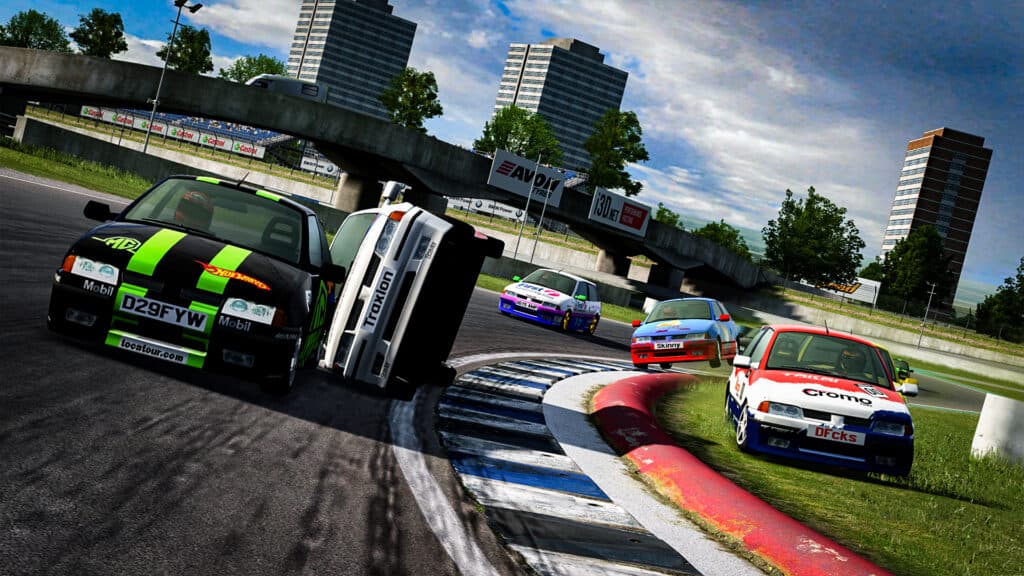
Although these days it takes at least three clicks to join an online race in LFS, there’s no doubt its passionate community still finds the sim highly addictive and rewarding to play. In my research for this article, I joined several multiplayer ‘Cruise’ servers using road cars.
It was fun to drive alongside random people in ad-hoc races or to slide stylishly in tandem slides – essentially just enjoying the tactile driving physics of LFS. Except when it came to my awful Westhill mini-roundabout drifting attempts…
The handling still has a ‘heft’ to it, with understeer felt naturally through the wheel. I used a Fanatec CSL DD with the ‘force strength’ raised to 0.50, with plenty of detail fed back to me in order to keep the car on the limit. And often over it. And then over the barriers.
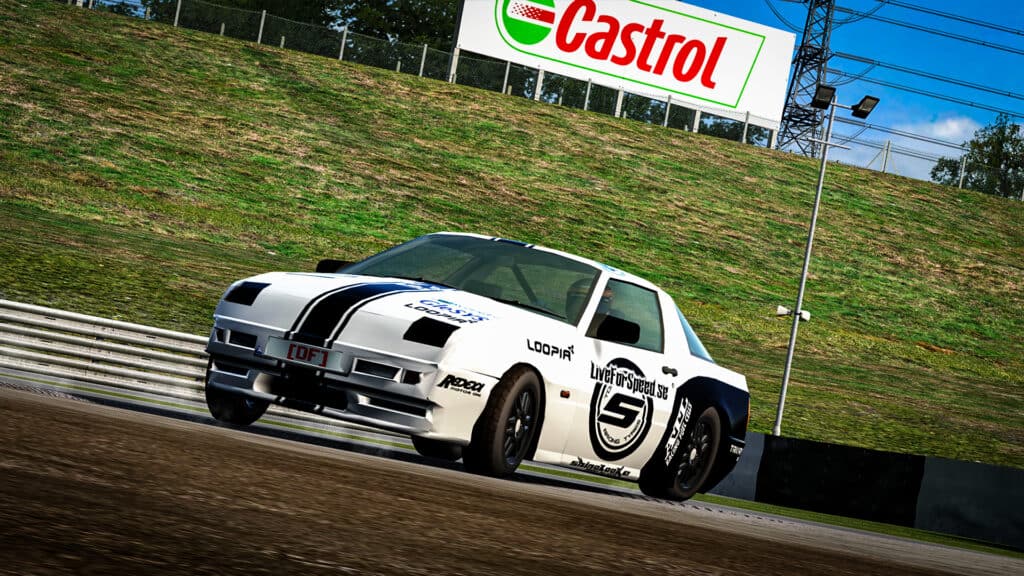
Valterri, it’s James. You are P1. Repeat, you are one lap behind P1.
Live For Speeds’s community thrived in the early years of the sim, so much so that many of today’s professional racing drivers actively took part in online races. None more so than Finnish superstar Valetteri Bottas, who could be found racing for LFS team spdo under the username ‘Vale’.
He was quick, too. Racking up over 200 wins before his elevation to Formula 1.
“I played Live for Speed for fun many years but unfortunately the last two of my racing seasons have been so busy that I have not time to really play… but I’m sure I will play sometimes still in the future as LFS is a really fun game and [you] get really tight nice races online,” read his 2010 farewell post on the title’s forums.
I guess we can understand why he hasn’t been seen in a lobby lately, six F1 manufacturer championships and 10 Grand Prix don’t win themselves, after all.
Will Dendy, who competes in the GTH class of the British-based GT Cup championship, credits LFS for refining his racing techniques.
“I started racing on Live for Speed shortly before I began my karting career in 2004. I was on a tight budget and could only get out in the kart eight weekends over the whole year.”
Dendy has been driving his Orange Racing McLaren 570S GT4 to great success already this season, taking two wins, with the most recent coming at Oulton Park on the 9th of July. In his LFS heyday, he raced with the gamer tag ‘Ayrton Senna 87’, even recruiting Bottas to his TSR team.
“It’s safe to say that without LFS I wouldn’t be where I am today, as it enabled me to improve while I wasn’t karting – both in terms of speed, and more importantly, race craft. The physics encourages you to push the limit without overstepping it.
“The ultimate lap time is found on that fine margin between hustling the car and overdriving. I occasionally revisit the sim and it just amazes me how well it holds up today”.
It’s fair to say Dendy is still a fan of LFS, believing its physics model as one of the best in the genre.
Even today, when pushing the Formula BMW hard at Blackwood GP, you can both feel the car’s grip and innate nervousness, especially over kerbs. At higher speeds, it’s not an issue as the downforce sticks the car to the ground with just a dab of opposite lock.
The car is tremendous fun, eliciting the pure feelings of driving a kart, and it’s a joy to race wheel-to-wheel with others. The Scottish contingent of the Traxion.GG team recently tested Formula BMW out in a ‘Useless Gamers’ community event, with predictable results…
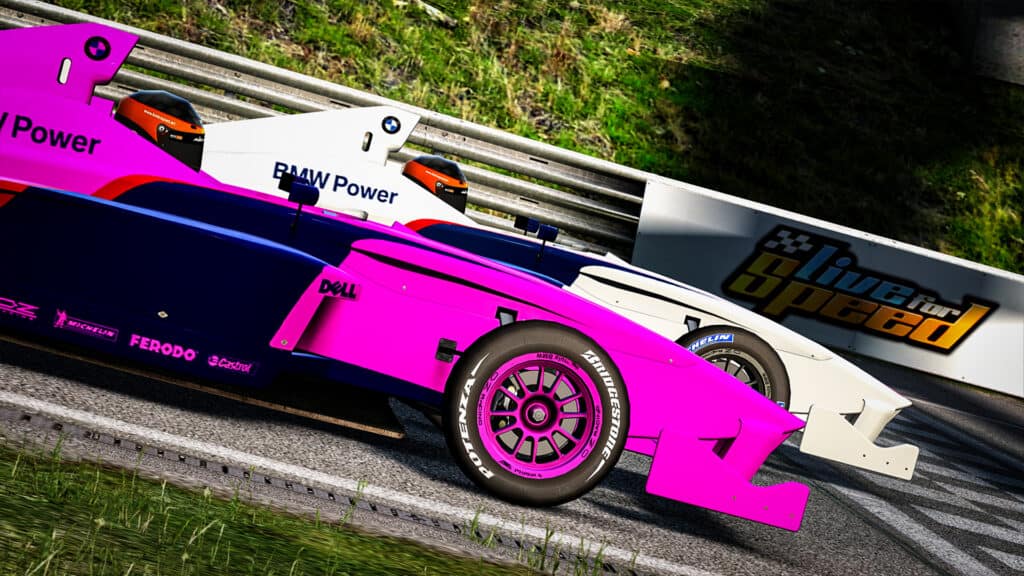
Scirockingham
One of the benefits of having a small development team is the ability to make quick decisions. Well, Live for Speed is made by just three people and the Volkswagen Scirocco debacle still happened…
The VW Scirocco was first pencilled in for release on the 19th of December 2008. It missed the pre-Christmas window, however.
“Refining and finalising the Scirocco is taking longer than expected,” said Roberts at the time.
“We are trying to make a good simulation of the traction control systems and the stability control systems, well known to be a very good feature of VW cars. We plan to fix the bugs and continue developing the Scirocco suspension and electronic control systems, to give you a good patch early in 2009.”
Nearly 14 years later, there’s still no sign of the VW, the project seemingly stalled by unsolvable tyre physics issues. The car has been used in the game before at least – it was available to drive at the 2008 Leipzig Games Convention in Germany, thanks to an officially-licensed tie-in with VW (see video above).
Similarly, the LFS team gained permission to add UK track Rockingham to the sim in 2008 but it didn’t appear until December 2015. In a first for the platform, the track was fully laser scanned and was available to sample in the British Touring Car Championship paddock during the 2009 race weekend.
The track has multiple layouts, including a 1.48-mile oval which played host to rounds of Champ Car in its heyday. Road course configurations held rounds of Britain’s foremost domestic series: BTCC, British GT and Formula 3. It was a diverse location, often being used for filming – notably for Channel 5’s Fifth Gear motoring program (who can forget Tiff Needell’s and Jason Plato’s epic sideways action?!)
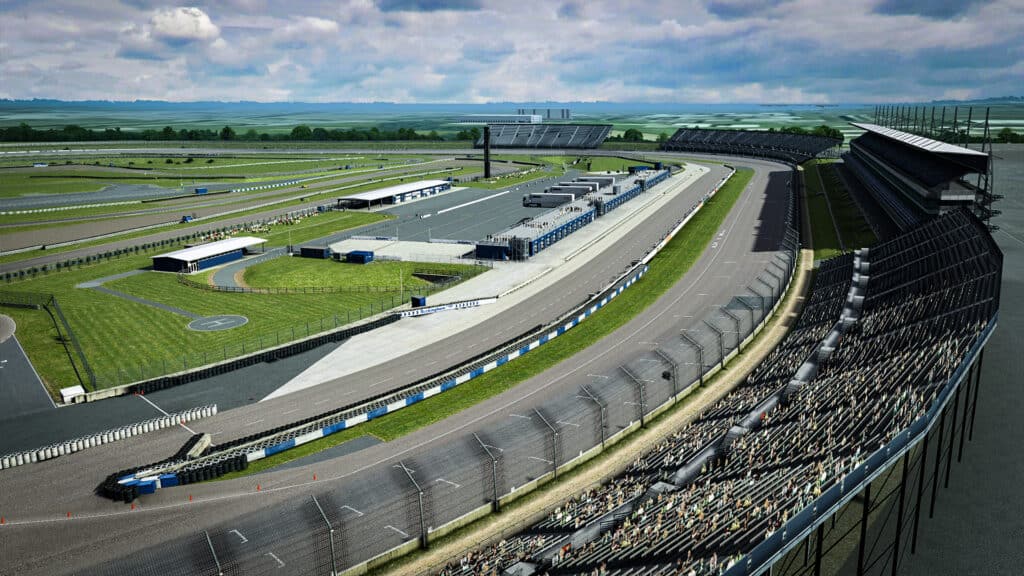
However, the circuit owners underestimated the desire for oval racing in the UK, and Rockingham’s final day as a racetrack came in November 2018. It was eventually sold off and is now used as a glorified car park for the auto industry.
The Scirocco itself was discontinued by VW in 2017. Which begs the question: how many Sciroccos are parked up at Rockingham now?
VW wasn’t the only manufacturer to feature in LFS. BMW also allowed the team to use its aforementioned Formula BMW single-seater and the BMW Sauber F1.06 Formula 1 car. At the time of release (2006), having the officially licensed Sauber F1 car of that year was a huge coup for the sim, and a hopeful sign of great things to come.
Unfortunately, however, licensed content has been thin on the ground, with no obvious signs of the situation changing – barring that pesky Scirocco. The BMW Sauber F1 car’s V8 exhaust note has also aged particularly poorly, matched somewhat by the elderly car model.
It also feels a little too understeer-heavy on the default set-up, but the dedicated community is always on hand for better settings and advice.
On the other hand, the Formula BMW has stood the test of time in terms of handling and sounds, providing an engaging challenge with the added immersion of a convincing exhaust note.
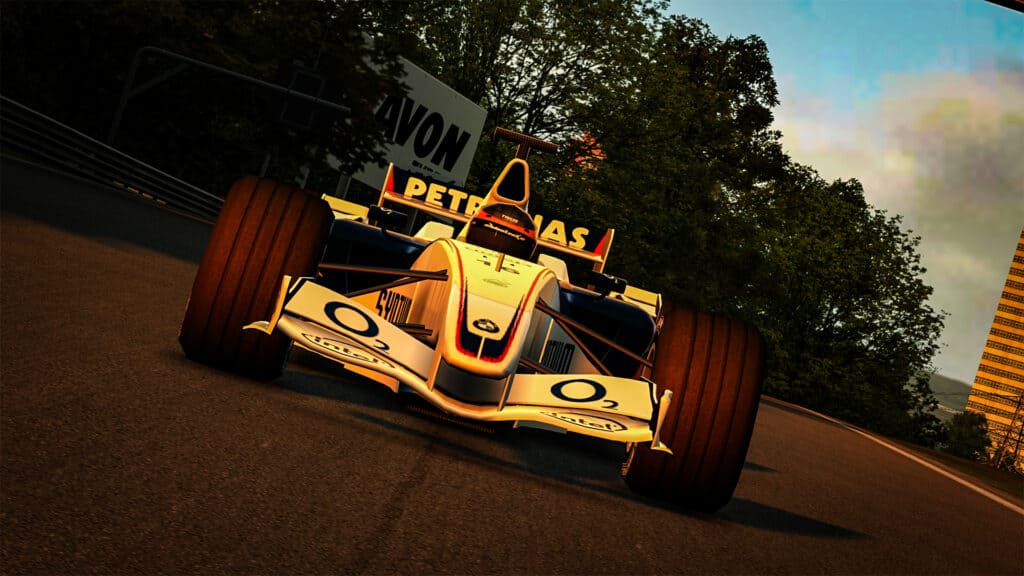
On the subject of sounds, LFS allows players to change several facets of engine and transmission audio on its cars. By pressing shift+A, players can modify sliders for exhaust pipe tone, gear whine volume and air intake muffler, among others.
It’s impressively detailed, but LFS’ synthetic sounds were never the sim’s strong point. Altering the engine sounds with the in-game editor is fine, but it’s like applying a sticking plaster to a broken leg.
A completely re-worked sound system would be tremendous for the sim and not beyond the realms of possibility. Just look at how modders have transformed the sounds in 2004’s Richard Burns Rally. It’s astonishing.
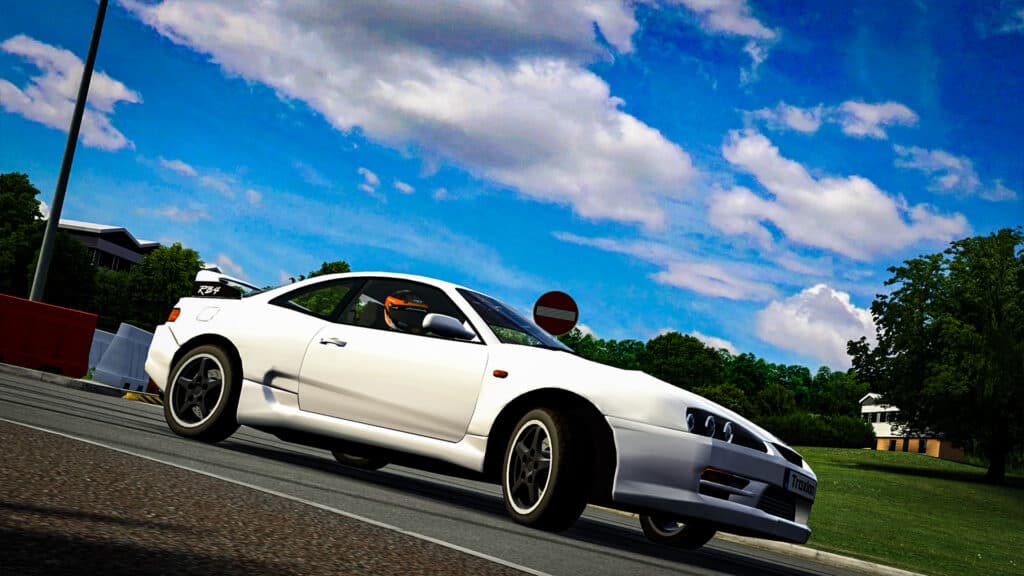
I’ve got the need, the need for Live for Speed.
Would I recommend Live for Speed to uninitiated sim racers today? It’s hard to say, to be honest, and I’m completely on the fence.
For the amount of content you get with the full, £36 S3 licence (nine environments and 20 cars), you could buy AC and all its DLC packs (178 cars and 19 tracks) and still have money left over to buy leading sims such as rF2 and Assetto Corsa Competizione when on sale.
Thanks to mods, AC (for PC players) has all the variety of (unofficial) cars across every motorsport discipline you can think of. In my opinion, however, LFS has a rawer, much more intuitive handling model. As a racing sim fanatic, I’m happy to have such a great variety of sims at my disposal, with each having its own merits.
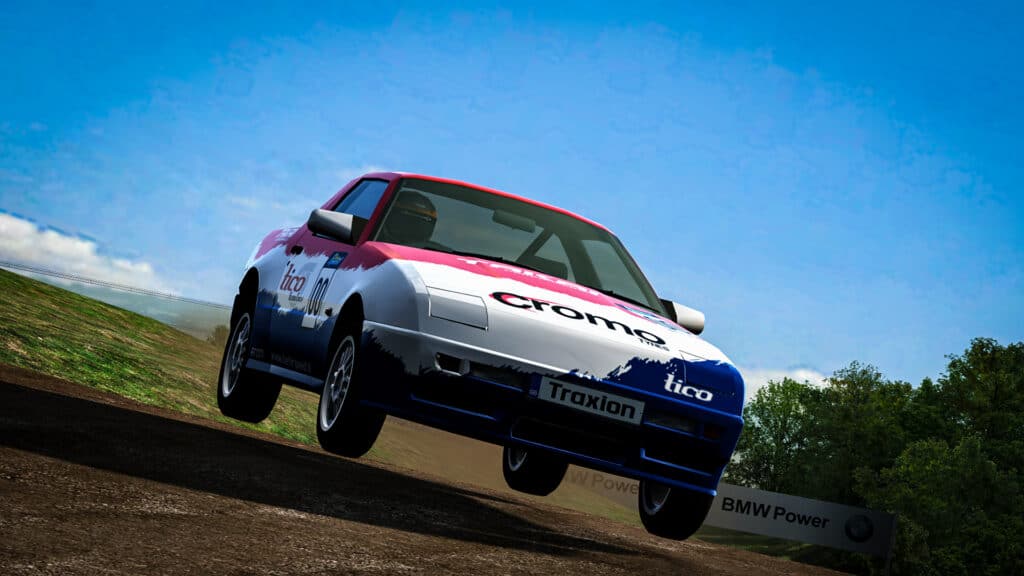
£36 (£12 and £24 price points are also available) is a significant outlay for a sim that’s moving into its third decade of existence, no doubt, but the physics are still such a delight to master. In a similar fashion to Reiza’s Automobilista, Live for Speed still has all the ‘feels’ of a true driving simulator, and it’s for that reason a small band of loyal supporters continue to hold LFS in such high regard.
With its most recent update – v0.7D – appearing in April 2022, development is clearly still an ongoing process, albeit a sluggish one, as highlighted by the VW Scirocco example. Because of this, it’s no great surprise to learn many fans have abandoned this and moved to other sims.
Yet late last year (December 2021), LFS’ 0.7A update gave the title a new lease of life. For the first time, mods could be created and added to the service (if approved by the LFS team), eliminating the lack of vehicle content at a stroke.
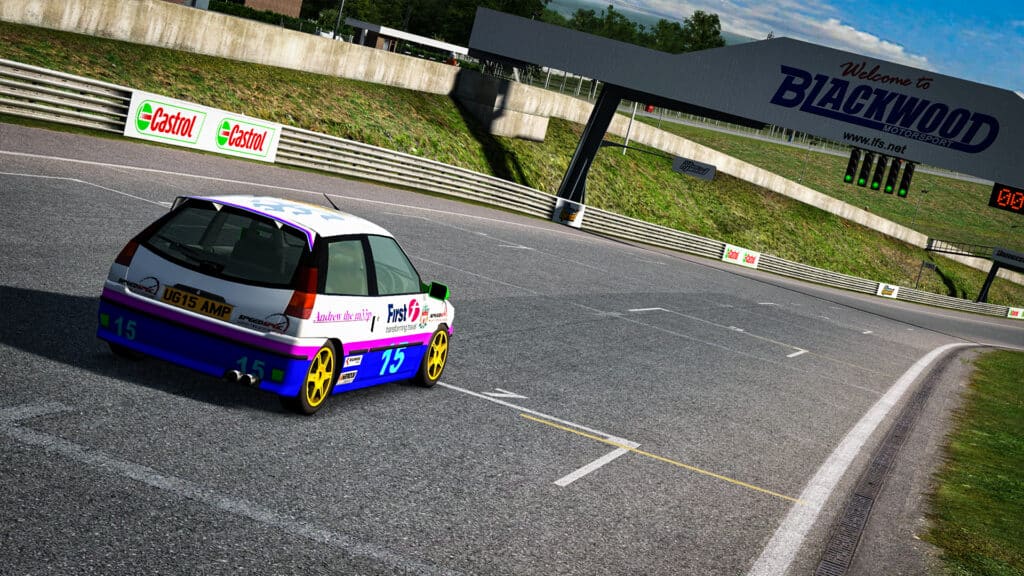
Naturally, quality is variable, but the chance to drive (and ride!) different vehicles and freely join multiplayer servers with no mismatches makes LFS a notably fun multiplayer experience again
So, what does the future hold for Live for Speed? Well, day/night transitions have been showcased across several environments – and they look great. Dynamic weather is another feature thought to be in the works, although there’s little to no information on this right now.
Early last year (February 2021), Roberts even addressed enquiries from the LFS drift community over steering lock adjustments to the popular XR GT Turbo and FZ50 GTR cars, bringing them up to real-world drift car set-up levels.
VR has also been successfully implemented in-game for some time and it works incredibly well, offering one of the smoothest sim racing VR experiences on the market today. It also features stereoscopic wing mirrors, so your perspective of the action behind changes depending on your eye position. That’s supreme, real-world attention to detail right there.
For me, LFS always had that ‘just one more lap’ ability to hook you in thanks to its driving feel. If you’re serious about sim racing, then at the very least try the free demo. It features three cars (including the wonderful Formula BMW), plus the Blackwood GP circuit, which I think is perhaps one of the finest fictional tracks in all of sim racing.
Live for Speed is a seemingly recalcitrant sim: it’s infrequently updated, its graphics and sounds are a generation behind the competition and it’s lacking in officially licensed track and vehicle content.
Don’t let that put you off though, it could well be the best sim you’ve ever played.


